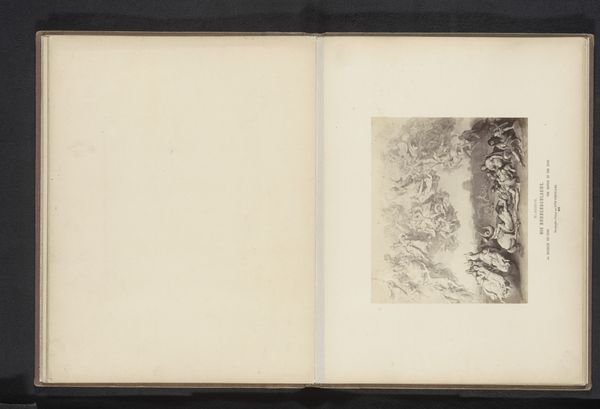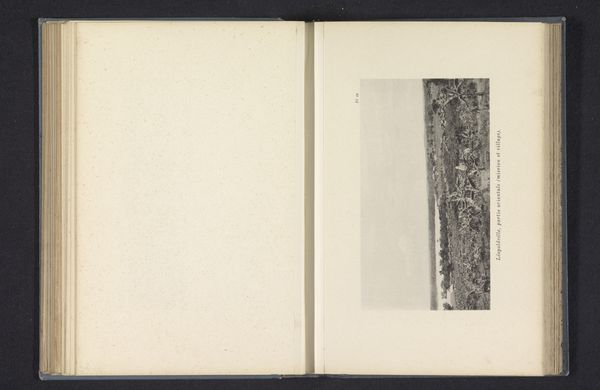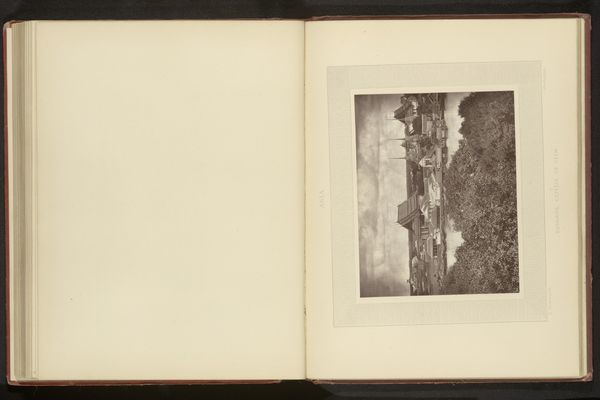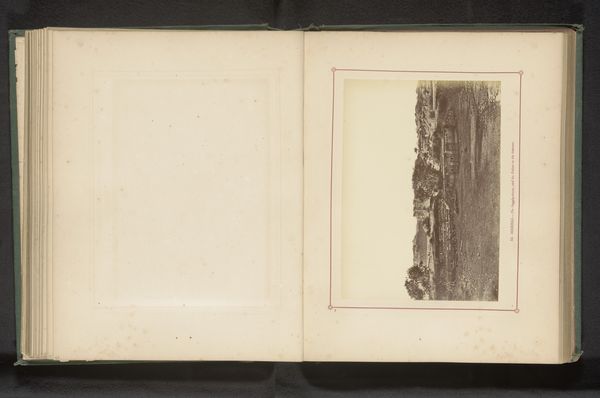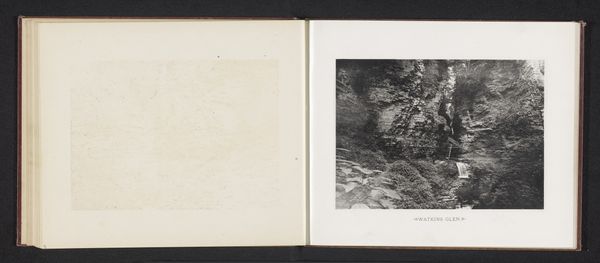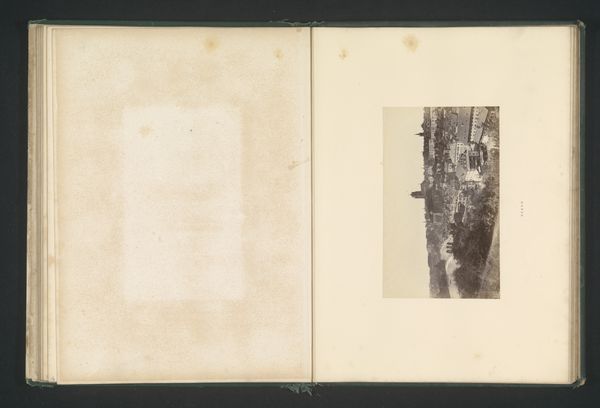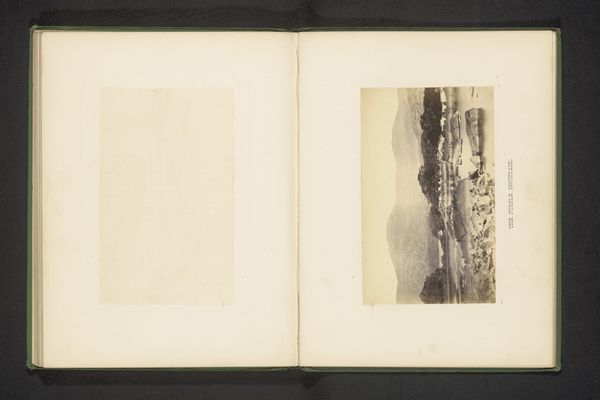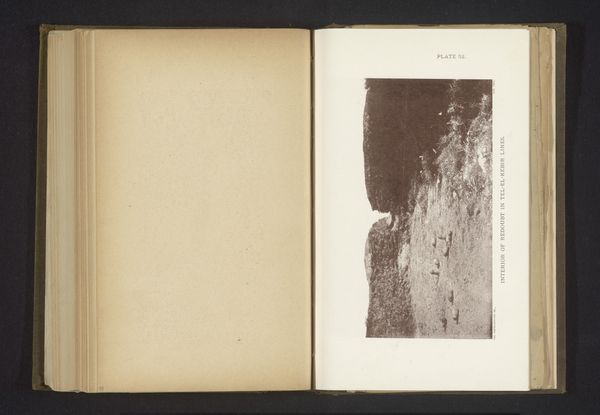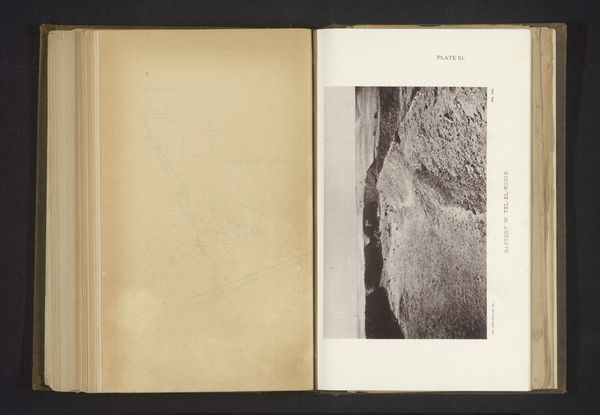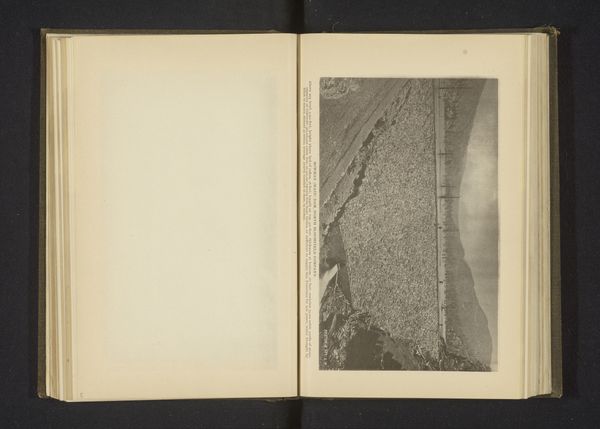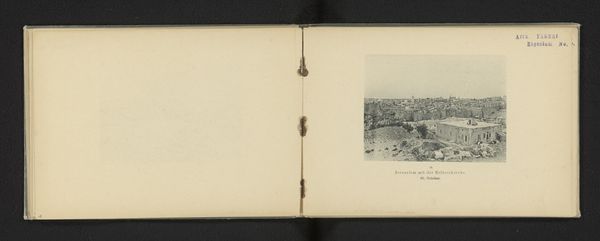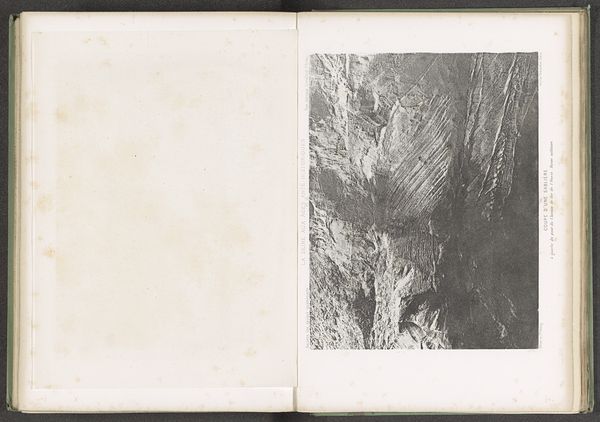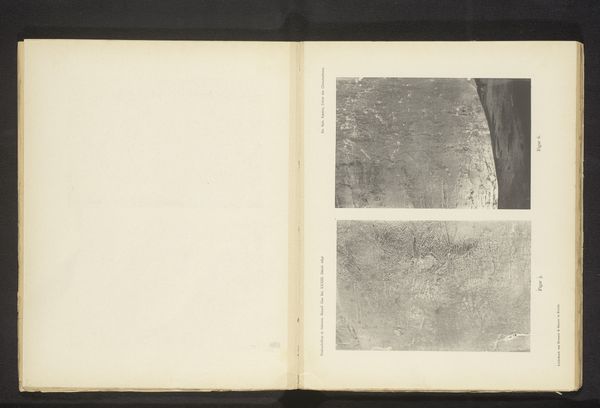
Dimensions: height 106 mm, width 146 mm
Copyright: Rijks Museum: Open Domain
Curator: Here we have "Gezicht op Fairy Glen," or "View of Fairy Glen," a gelatin-silver print created before 1870 by Francis Bedford. The print captures a scene reminiscent of the Romantic era’s fascination with the sublime power of nature. What do you make of it? Editor: Well, initially, it's moody. It has a hushed atmosphere. The glen almost feels like it’s holding its breath. All these greens and browns... Makes you want to be right there in that stillness, listening to the water. Curator: The Glen's location likely had an impact on the work’s reception. Fairy Glen is located on the Isle of Skye in Scotland. During the mid-19th century, landscape photography grew increasingly popular with a wider middle class that was gaining both disposable income and leisure time. Travel became popular, and in this context landscape photography fed appetites to document these expeditions. Editor: Right, it's a memento for a grand tour, but it also triggers something deeper, maybe the ancient stories rooted in places like that. There’s this... suggestion that there’s magic here. Curator: Yes, that interplay of picturesque scenery with a hint of the unknown aligns well with the burgeoning tourism of the time. It offered not only documentation, but a promise of something more profound to the adventurous traveler. The landscape, and photographs like this one, contributed to the making of an imaginary, a staging of experience, even. Editor: Totally. And you can almost feel Bedford chasing that light. It’s hitting just right on the water. Capturing this liminal space between seen and unseen feels absolutely of the time. Curator: And of course, the gelatin-silver printing process allowed for a higher level of detail, lending a sharper clarity. What some scholars call “hyper-realism." Editor: I suppose it makes sense; if you’re going to lug all that equipment out into a remote, damp location you may as well push the resolution limits as far as they can go. You want the image to last, to be a true memory. Curator: Absolutely. In doing so, Bedford contributed to the romanticization of the Scottish Highlands, shaping how it was perceived and experienced for years to come. Editor: Seeing the print now, over a century later, its beauty remains striking, transporting me not only to the Highlands but to a different time, offering us a lens through which we see and understand nature’s hold on our imagination. Curator: Precisely. It encapsulates a moment, an era, and an idealized vision of nature.
Comments
No comments
Be the first to comment and join the conversation on the ultimate creative platform.
